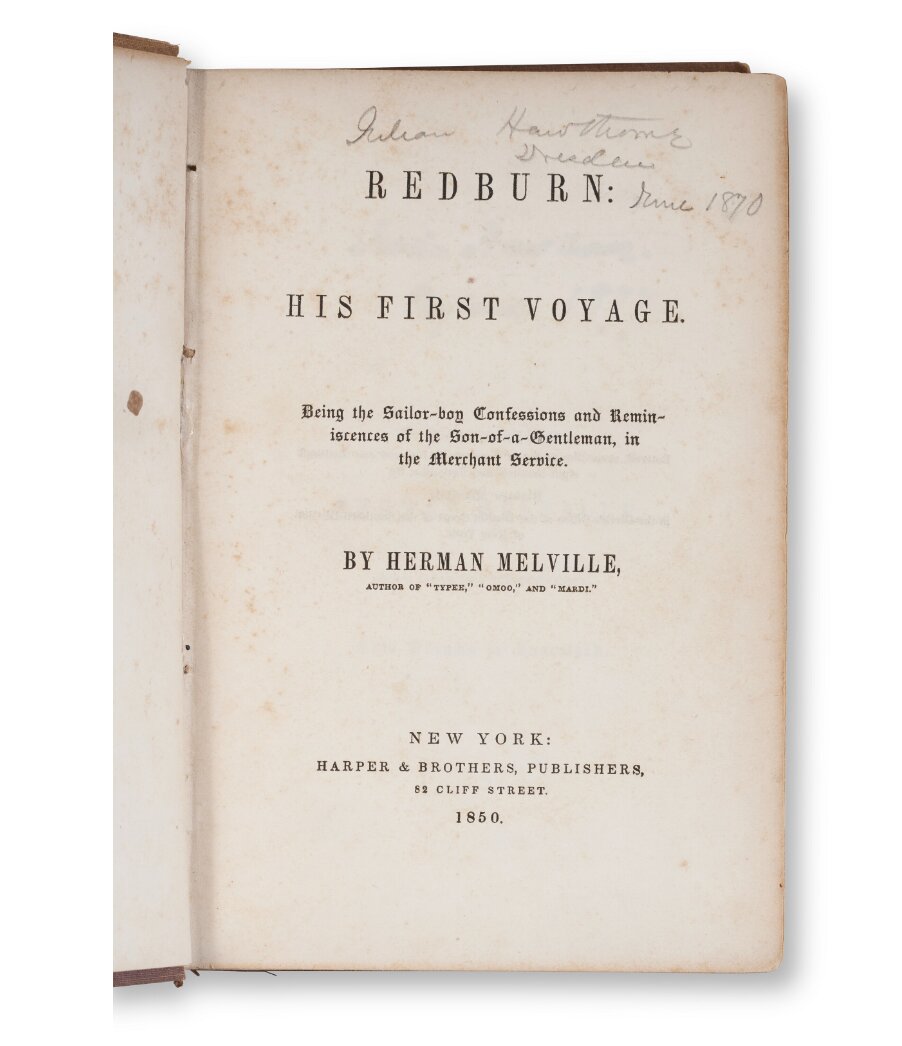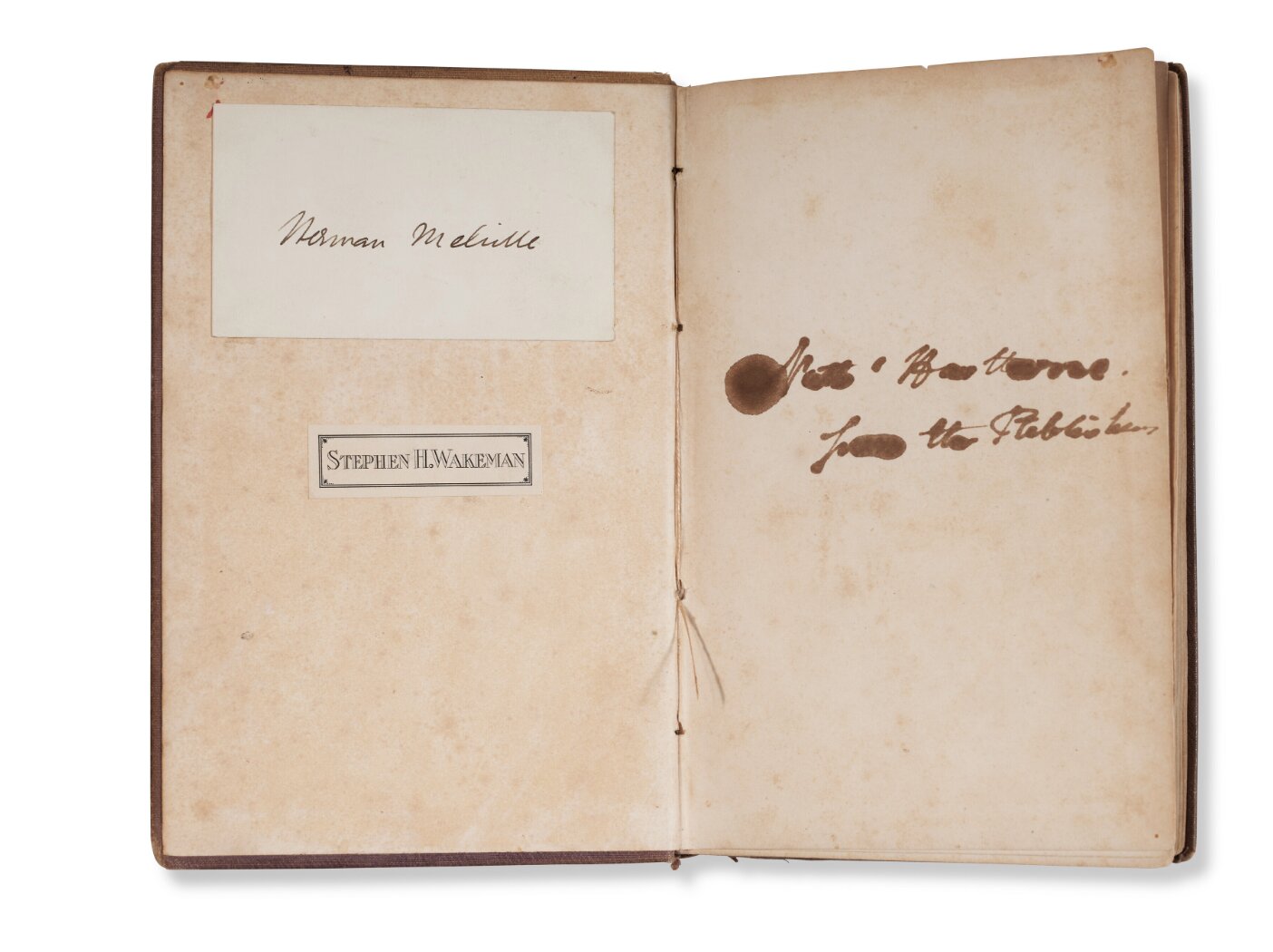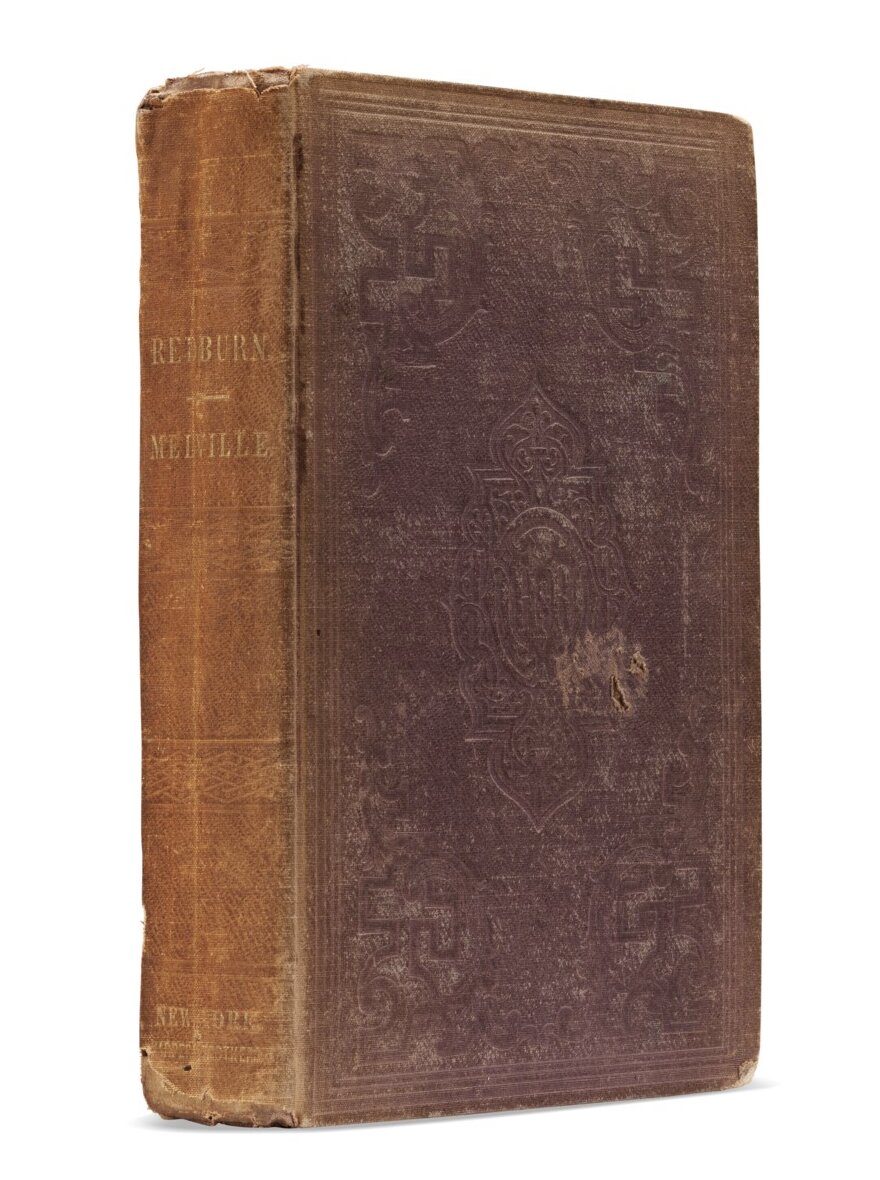“an association copy linking two of the greatest figures in American literature”
MELVILLE, HERMAN. Redburn: His First Voyage
New York: Harper & Brothers, 1850
Original purple cloth. Faded, rubbed with some loss to spine ends, rear joint repaired. Foxing, name of Nathaniel Hawthorne blotted. Custom case.
“An association copy linking two of the greatest figures in American literature” (Reese), this is Nathaniel Hawthorne’s copy of Herman Melville’s Redburn. The front free endpaper is inscribed: “Nath. Hawthorne from the Publisher.” The facing pastedown bears Herman Melville’s signature on a card.
Redburn, first published in 1849, is based on Melville’s experiences while on a cargo ship sailing to Liverpool in June 1839. It recounts the adventures of a son of a gentleman on his first voyage, living among coarse and sometimes brutal sailors.
The importance of the relationship between Herman Melville and Nathaniel Hawthorne cannot be overstated. In the late 1840s, the Melville family moved to Arrowhead, their farm in the Berkshires. There he was encouraged and inspired by Hawthorne, whom he visited in nearby Lenox. They met on 5 August 1850 at a picnic hosted by a mutual friend. Melville had just read Hawthorne’s latest collection of stories, Mosses from an Old Manse, and would review the collection anonymously in Literary World several weeks later.
Reading Mosses from an Old Manse, with its themes of human evil and moral ambiguity, had a transformative effect on Melville and the writing of Moby-Dick. Reading Hawthorne helped to make Melville not just a writer of sea stories but a profound investigator into the human condition. Their friendship in this key period helped produce Moby Dick (1851) which he dedicated to Hawthorne, “In Token of My Admiration for His Genius.” And that same year Hawthorne published The House of the Seven Gables. Julian Hawthorne, the author’s son and an author himself, would many years later publish Nathaniel Hawthorne and his Wife in 1884. In writing the book, he called on Melville, who in the 1880s was nearly forgotten and working in the Customs House. The younger Hawthorne wrote that Melville was “a melancholy and pale wraith of what he had been in his prime” and that it was “a sad interview.” “I knew that he had once proposed to Hawthorne to join him in some literary work … I spoke of this project to Melville but he made no intelligible response. His words were vague and indeterminate … When I tried to revive memories in him of the red-cottage days —red-letter days too for him—he merely shook his head” (Leyda, The Melville Log). Melville’s wife purchased a copy of Julian Hawthorne’s book in 1885, but Melville made no recorded comments.
A remarkable association highlighting not only Melville’s greatest creative period but also his fall to obscurity.
BAL 13660. Provenance: Nathaniel Hawthorne (publisher’s presentation inscription) – Julian Hawthorne (ownership inscription in several places) – Stephen H. Wakeman, perhaps the greatest of all collectors of 19th-century American literature (bookplate, his sale, American Art Association, 28 and 29 April 1924, lot 410).
$72,000





